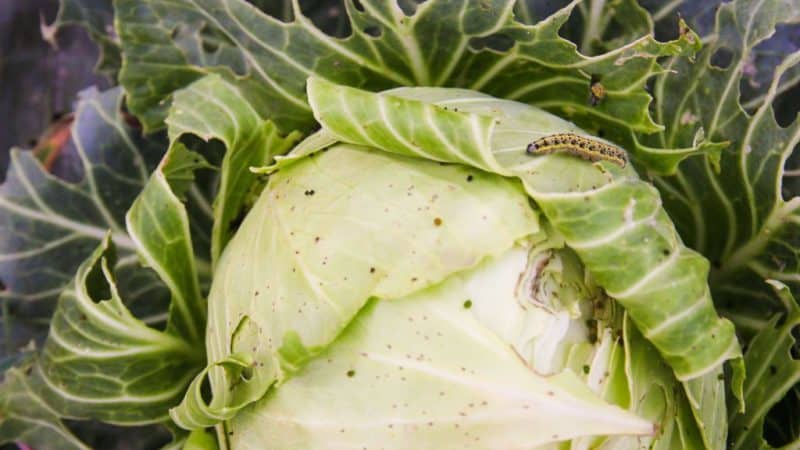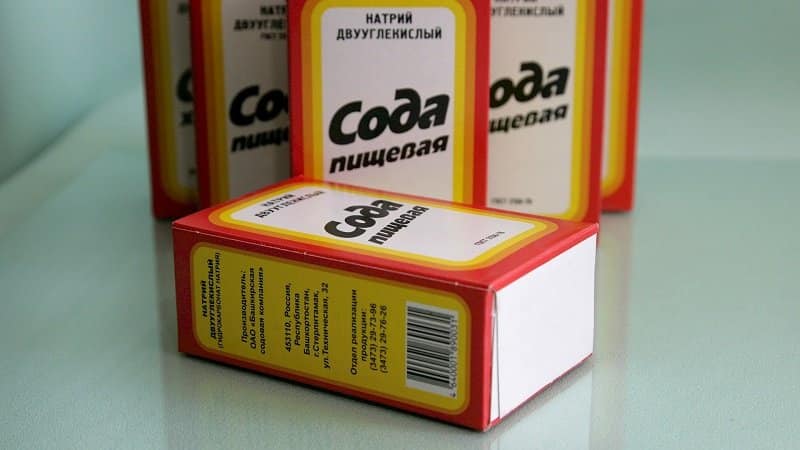How to treat cabbage against caterpillars and slugs: folk remedies
Not only people, but also pests love to enjoy delicious vegetables grown in their summer cottages. It can be very difficult to get rid of them, and poisoning with heavy chemicals is fraught with health risks. Then folk recipes come to the rescue. They will help not only get rid of pests, but also preserve the beneficial properties of the vegetable. Let's figure out how to treat cabbage if caterpillars appear on it.
How to treat cabbage against caterpillars: folk remedies

Caterpillars are very voracious and gnaw numerous holes in the leaves and the head of cabbage himself. Their waste products trigger rotting processes in the vegetable, after which it cannot be eaten.
To exterminate caterpillars on cabbage, hot peppers, decoctions of herbs and tomato tops, eggshells, chicken droppings, and lime are used.
Some gardeners advise planting fragrant plants near cabbage: cloves, marigolds, garlic, sage, calendula, etc. The pungent smell will repel butterflies that lay eggs, from which larvae will subsequently appear.
Some summer residents build birdhouses to attract birds to the site, which will destroy pests.

Spraying with an infusion of wood ash and tar soap
Wood ash is an alkali that most garden pests really dislike. The soap in the recipe creates a slippery surface that will prevent the caterpillars from moving and will become trapped and die.
Dissolve 2 tbsp in 10 liters of water.ash, mix and leave for 24 hours to infuse. The next day, filter, add 3 tbsp. l. tar soap and stir until smooth. Using a spray bottle, treat cabbage leaves and heads of cabbage.
Important! Treatment should be carried out immediately after detection of larvae. Once the caterpillars reach a large size, it will be much more difficult to get rid of them.

Baking soda
The soda solution is used immediately after preparation. The method is effective because soda acts as an antiseptic. It is used both at the stage of soaking seeds and for processing already ripened heads of cabbage. Such a solution, once on the ground, will not harm the vegetable, but, on the contrary, will act as a fertilizer.
For 5 liters of water you will need 10 tbsp. l. soda The solution is quickly and intensively stirred until completely dissolved. Spray all the leaves of the vegetable on both sides.

Read also:
How to get rid of caterpillars on dill: pest control methods
How to get rid of caterpillars on peppers
What to do if there are caterpillars in tomatoes - ways to combat the pest
Vinegar solution
Another effective method of fighting caterpillars is a vinegar solution. 0.5 tbsp is diluted in 10 liters of water. table vinegar 9% The resulting mixture is treated with the lower and upper leaves of the cabbage, avoiding contact with the ground. It is recommended to carry out such treatment no more than once every 10 days.
Important! All solutions are effective only at the time of preparation. They are used immediately and are not stored until the next processing.

Sugar syrup
Here, sugar does not act as a toxic substance that can destroy caterpillars, but as a bait for insects, such as wasps. They will fly to vegetables sprayed with syrup and destroy pests.
As an alternative, you can use old jam diluted with water.
How to treat against slugs

Slug is another pest that can be found on cabbage heads and leaves. Simply removing it from a vegetable can be problematic. Most slugs go out to “hunt” at night, as they cannot stand the heat and scorching sun.
Important! Mollusks love coolness and moisture, so their appearance can be provoked not only by prolonged rainy weather, but also by excessive watering of the crop.
- To combat slugs, the same methods are used as with caterpillars. Ash, soda and vinegar have a detrimental effect on them. But there are still some foods that slugs cannot tolerate, and they can be found in almost every home: coffee and ammonia. Mollusks find their odors unpleasant.
- To treat cabbage against slugs, brew a strong drink with instant coffee and, when it cools, spray the cabbage leaves with it. For small mollusks, such a procedure will be disastrous, and adults will lose orientation. Coffee repels not only slugs, but also cabbage flies.
- Ammonia or ammonia helps to keep shellfish away from beds. To prepare the solution, you need to dissolve 40 ml of ammonia in 10 liters of water. You need to spray the leaves with a spray bottle twice. The interval between the first and second times should be no more than 15 minutes. What to do if slugs also appear on peppers? read this article.
Important! All procedures for treating vegetables against pests are carried out in dry weather in the morning or evening, so that the crop is not damaged by the scorching sun. If it rains, repeat the procedure.
Conclusion
Growing your own vegetables without chemicals is a complex and painstaking process that requires considerable effort.If you pay due attention not only to pest control, but also to preventing their appearance in the beds - removing rotten leaves in a timely manner, removing weeds, thoroughly loosening the soil in dry weather - a bountiful harvest will be ensured.